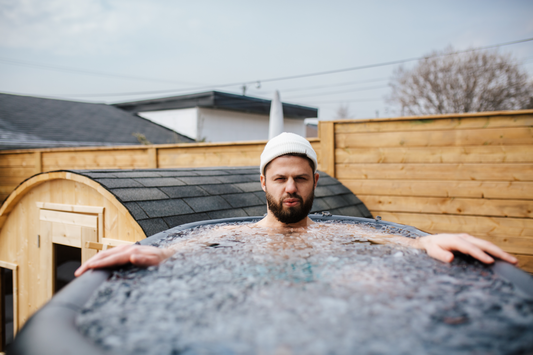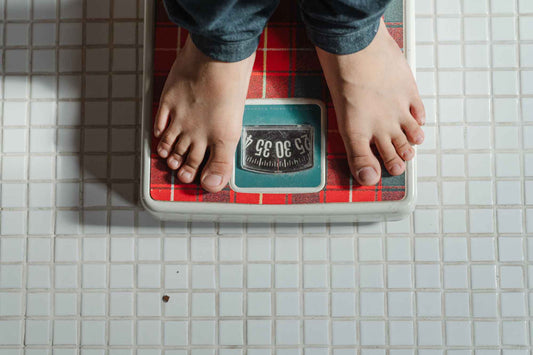In the dynamic landscape of fitness, where cutting-edge methods frequently intersect with time-tested traditions, there's one practice that's currently capturing the curiosity of athletes and fitness enthusiasts alike: cold plunging. At Coldture, we often encounter a frequently asked question: "Should I cold plunge after weightlifting?" To offer an insightful and comprehensive answer to this crucial query, we've curated this extensive guide for you.
Understanding the Concept: A Primer on Cold Plunging
First things first, let's delve into what cold plunging entails. Cold plunging, also known as cold water immersion or ice bathing, is a practice where one submerges oneself in notably cold water—usually under 59°F/15°C—for a specific time period. This practice isn't a modern-day novelty; it's a ritual that's deeply rooted in the history of various ancient civilizations. Today, it's emerging as a compelling topic in the realm of sports and exercise recovery, with an array of potential benefits that span from physical to psychological wellness.
Delving Deeper: The Intersection of Cold Plunging and Weightlifting
Weightlifting, while an effective exercise for building strength and muscle, often brings along a side-effect: post-workout muscle soreness, or Delayed Onset Muscle Soreness (DOMS). DOMS can potentially interfere with future workouts or, at the very least, make them a tad less enjoyable. This is where cold plunging can step in as a potential ally, offering a natural strategy to manage post-workout discomfort.
But, the potential advantages of cold plunging aren't confined to physical recovery. Proponents of cold plunging often speak about its revitalizing effect on mental wellbeing, such as improved alertness, enhanced focus, and a reduction in perceived fatigue. Immersing in cold water after an intensive weightlifting session can leave you feeling both physically recovered and mentally recharged.
The Underpinning Science: What Research Suggests About Cold Plunging and Recovery
It's important to understand that while experiences with cold plunging can be highly individual, there is growing scientific research providing evidence of its potential benefits in a post-workout context.
A multitude of studies, such as those featured in the Journal of Strength and Conditioning Research and the British Journal of Sports Medicine, suggest that cold water immersion may help alleviate DOMS symptoms following weightlifting. In addition, there's evidence indicating that cold plunging can potentially hasten recovery from resistance training.
While these findings are encouraging, more comprehensive research is required to fully uncover the benefits of cold plunging, the extent of its impact, and the most effective protocols when coupled with weightlifting.
How to Cold Plunge: A Detailed Guide for Your Post-Weightlifting Routine
Armed with an understanding of cold plunging's potential benefits, the next step is to explore how to incorporate this practice into your post-weightlifting routine. Here are a few practical tips:- Timing: Attempt to cold plunge shortly after your weightlifting session, as this is believed to maximize the potential recovery benefits.
- Duration: While a standard duration for plunging is yet to be established, most advocates suggest a plunge duration between 10-15 minutes.
- Temperature: The target water temperature should be below 59°F/15°C. With Coldture's plunge tubs, you can effortlessly regulate the water temperature to suit your comfort and efficiency
- Frequency: The frequency of cold plunging should be tailored to your individual needs and response. This could range from daily plunges to just a couple of times per week.
As with all new health or wellness practices, it's crucial to consult with a healthcare professional beforehand. Individuals with certain pre-existing health conditions, such as cardiovascular diseases, should avoid cold plunging unless approved by a healthcare provider.
A Trip Down Memory Lane: The Cultural and Historical Relevance of Cold Plunging
Cold plunging, while a current trend, is deeply rooted in history. Numerous cultures have been utilizing cold water immersion for its perceived health benefits. For instance, the Romans incorporated a cold plunge, known as the frigidarium, into their bathhouse rituals. Similarly, the Finns have a practice called Avanto, which involves cutting a hole in frozen water bodies for a cold plunge. This historical context adds a rich, fascinating backdrop to the contemporary application of cold plunging. Despite the advancements in sports science, this straightforward practice continues to hold relevance today, which attests to its enduring appeal in overall wellness and recovery.
Embarking on the Wellness Journey with Coldture
At Coldture, we're dedicated to not just providing high-quality cold plunge tubs—we aspire to be your partner in wellness. Our top-tier products are designed to create a comfortable and accessible platform for your post-weightlifting recovery sessions. With Coldture's tubs, optimal temperature regulation is at your fingertips, making your cold plunging experience both seamless and invigorating.In conclusion, if you're a weightlifter in search of a natural and potentially effective recovery strategy, cold plunging may be worth considering. Remember, individual experiences with cold plunging can greatly vary. As you explore this wellness practice, our team at Coldture stands ready to support you, providing the resources and guidance you need to make informed decisions about your health and wellness. After all, your journey to optimal wellness is a deeply personal one, and we're privileged to accompany you on that path.






7 comments
HOW TO RECOVER YOUR LOST BITCOIN
I lost €755,000 on my wallet because I couldn’t remember my passcode and security words. I told a coworker about my situation, and he suggested that I contact a legitimate hacker called THE HACK ANGELS RECOVERY EXPERT. They have the knowledge, tools, and experience to recover your funds. They not only gave me my Bitcoin back but also restored my peace of mind. I can’t express enough how much their expertise, professionalism, and dedication meant to me. If you are a victim and need to get your funds back, please don’t hesitate to contact THE HACK ANGELS RECOVERY EXPERT in any of the information below.
WhatsApp +1(520)200-2320) or shoot them an email at (support@thehackangels.com) They also have a great website at(www.thehackangels.com)
I highly recommend them to anyone who has ever been in such a situation
HIRE THE TOP CRYPTO & BITCOIN RECOVERY EXPERTS THE HACK ANGELS
I have always thought it would be impossible to recover stolen cryptocurrency funds until I came across a hacker called THE HACK ANGELS RECOVERY EXPERT. Thanks to their expertise and dedication. If you’ve lost Bitcoin due to a wrong transaction, hacking, or forgotten private keys, THE HACK ANGELS RECOVERY EXPERT is here to help. If they could recover my $820,000 there’s hope for you too. I highly endorse their services to anyone looking to have their funds traced and recovered. You can get in touch with them through their Contact
WhatsApp (+1(520)200-2320
Email at support@thehackangels.com
Website at www.thehackangels.com
If you’re in London, you can even visit them in person at their office located at 45-46 Red Lion Street, London WC1R 4PF, UK.
HIRE THE TOP CRYPTO & BITCOIN RECOVERY EXPERTS THE HACK ANGELS
I have always thought it would be impossible to recover stolen cryptocurrency funds until I came across a hacker called THE HACK ANGELS RECOVERY EXPERT. Thanks to their expertise and dedication. If you’ve lost Bitcoin due to a wrong transaction, hacking, or forgotten private keys, THE HACK ANGELS RECOVERY EXPERT is here to help. If they could recover my $820,000 there’s hope for you too. I highly endorse their services to anyone looking to have their funds traced and recovered. You can get in touch with them through their Contact
WhatsApp (+1(520)200-2320
Email at support@thehackangels.com
Website at www.thehackangels.com
If you’re in London, you can even visit them in person at their office located at 45-46 Red Lion Street, London WC1R 4PF, UK.
HIRE THE TOP CRYPTO & BITCOIN RECOVERY EXPERTS THE HACK ANGELS
I have always thought it would be impossible to recover stolen cryptocurrency funds until I came across a hacker called THE HACK ANGELS RECOVERY EXPERT. Thanks to their expertise and dedication. If you’ve lost Bitcoin due to a wrong transaction, hacking, or forgotten private keys, THE HACK ANGELS RECOVERY EXPERT is here to help. If they could recover my $820,000 there’s hope for you too. I highly endorse their services to anyone looking to have their funds traced and recovered. You can get in touch with them through their Contact
WhatsApp (+1(520)200-2320
Email at support@thehackangels.com
Website at www.thehackangels.com
If you’re in London, you can even visit them in person at their office located at 45-46 Red Lion Street, London WC1R 4PF, UK.
Are you searching for a real spell caster ?
It is amazing how quickly Dr. Excellent brought my husband back to me.
My name is Heather Delaney. I married the love of my life Riley on 10/02/15 and we now have two beautiful girls Abby & Erin, who are conjoined twins, that were born 07/24/16. My husband left me and moved to be with another woman. I felt my life was over and my kids thought they would never see their father again. I tried to be strong just for the kids but I could not control the pains that tormented my heart, my heart was filled with sorrows and pains because I was really in love with my husband. I have tried many options but he did not come back, until i met a friend that directed me to Dr. Excellent a spell caster, who helped me to bring back my husband after 11hours. Me and my husband are living happily together again, This man is powerful, contact Dr. Excellent if you are passing through any difficulty in life or having troubles in your marriage or relationship, he is capable of making things right for you. Don’t miss out on the opportunity to work with the best spell caster.
Here his contact. Call/WhatsApp him at: +2348084273514 "
Or email him at: Excellentspellcaster@gmail.com ,
For more information visit his website:https://drexcellentspellcaster.godaddysites.com